Recovery Tools: Mobility Bands, Mini Loop Bands & Stretching Accessories You Shouldn’t Skip
Strength training doesn’t stop when you rack the bar. What you do before and after
lifting is just as important as the weight you move. If your warm-up is lazy, your lifts feel
off. If your recovery routine is sloppy, progress stalls and injuries creep in. The truth is
simple: recovery is essential to training—and it determines whether you keep moving forward or end up stuck with soreness, stiffness, or setbacks.
Many lifters obsess over barbells, dumbbells, and big-ticket equipment while
overlooking the smaller, inexpensive tools that keep the body running smoothly. Mobility
bands, mini bands, and stretching accessories may not look flashy, but they’re
essential for long-term performance. These tools help you loosen up tight muscles,
activate stabilizers, improve circulation, and recover faster between sessions.
If your body feels achy, tight, or unprepared when you hit the gym, chances are you’re
missing out on these recovery essentials.
Why Recovery Tools Matter
Skipping recovery is like running your car without oil—you might get away with it for a
while, but eventually the engine seizes up. Your body works the same way. Heavy
training creates stress. Without proper recovery, that stress accumulates until something
gives.
Adding the right tools into your routine helps with:
- Injury prevention – Stable joints and mobile tissues help reduce strain.
- Better warm-ups – Muscles fire more effectively when they’re properly primed.
- Improved recovery – Increased circulation reduces soreness and speeds up tissue repair.
- Consistent progress – Healthy joints keep you training harder, for longer.
When most people think about recovery, they picture foam rolling or taking rest days.
Those are valuable, but active recovery tools like bands and straps let you directly
target weak points and begin strengthening your problem areas. The result: fewer setbacks and more productive training cycles.
Mobility Bands
Mobility (or “floss”) bands are thick latex strips that you wrap around a joint or muscle.
Once applied, you move the area through a range of motion, restricting blood flow
temporarily. When you remove the band, fresh circulation rushes in, leaving tissues
looser and less restricted.
Check out the Serious Steel Mobility & Floss Band — built to last and trusted by
athletes who train heavy and need serious recovery.
Best Uses:
• Improving ankle and hip mobility before squats or lunges.
• Shoulder distraction drills before bench or overhead press.
• Post-training flushing for sore elbows or knees.
Pro Tip: Keep sessions short—1–2 minutes at a time. If the floss bands are wrapped too tight or on too long, they can cut circulation and cause numbness. You’re aiming for relief and looseness, not discomfort.
Mini Loop Bands
Don’t underestimate these compact bands. Mini Loop Bands are one of the most versatile
tools for warm-ups and accessory work. They target stabilizer muscles that big lifts often
miss, making your movement patterns safer and more powerful.
Grab the Serious Steel Mini Loop Bands — available in multiple resistance levels so you
can scale activation drills to your needs.
Best Uses:
- Glute activation: lateral walks, monster walks, and banded squats.
- Hip Strengthening: Clam-shells (hip abduction), laying leg raises, glute bridges and lunges.
- Core engagement: plank kickbacks, banded crawls, or dead bug variations.
Common Mistake: Mini Loop Bands aren’t meant for max resistance. They’re tools for
activation, stability, and endurance. Treating them like heavy resistance bands often
leads to snapping or poor technique.
Stretching Accessories
Sometimes static stretches just don’t cut it— especially if you’re tight through the
hamstrings, quads, or shoulders. That’s where the stretch strap comes in. They allow
you to go deeper into a stretch and control the range of motion without straining.
Try the Serious Steel Stretch Strap — lightweight, portable, and perfect for post-
training cooldowns or at-home recovery sessions.
Best Uses:
• Hamstring stretches to improve deadlift setup and reduce lower back strain.
• Quad stretches that reduce knee stress after squats or lunges.
• Shoulder stretches that increase overhead mobility and bench press comfort.
Common Mistakes with Recovery Tools
Even the best tools won’t help if you use them incorrectly. Here are the most common
pitfalls to avoid:
- Overreliance: Tools can’t replace proper training, sleep, or nutrition. Think of them as supplements, not shortcuts.
-
Skipping consistency: Using a band once won’t undo years of stiffness. Real results
come from making these tools part of your regular warm-up and cooldown. - Poor technique: Wrapping floss bands too tightly or rushing through stretches reduces their effectiveness and can even increase risk.
Building Recovery into Your Routine
For best results, integrate these tools into your weekly schedule rather than treating
them as an afterthought. A simple framework could look like this:
-
Pre-workout (5–10 minutes): Mini loop bands for glute, shoulder, and core activation.
During training: Mobility bands between sets to maintain joint health if stiffness creeps in. - Post-workout (5–10 minutes): Stretch straps to restore range of motion and cool down effectively.
-
On rest days: Light band work or stretching sessions to speed recovery and keep
blood flowing. This balance ensures your body stays primed for heavy lifting without burning out.
Final Takeaway
Recovery isn’t just downtime—it’s a cornerstone of progress. By adding mobility
bands, mini-loop bands, and stretching straps to your gym bag, you’re protecting your joints, enhancing movement, and setting yourself up for years of productive training.
These simple tools don’t just reduce soreness—they make you a better, healthier, and
more consistent lifter. If you’re serious about your strength goals, don’t skip the basics.
Your future self will thank you.













